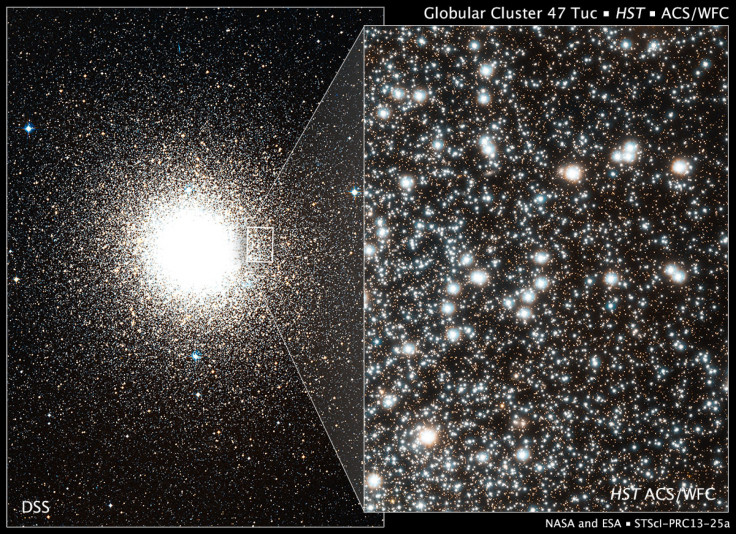Cosmic Dance Between Stars Gives A Glimpse Into The Early Days Of The Milky Way
Astronomers observing an ancient cluster of stars have discovered the cluster was made up of a group of older stars and a group of younger stars. This “cosmic choreography” allowed astronomers to peer back into the Milky Way’s past.

Using NASA’s Hubble Space Telescope, astronomers observed 47 Tucanae, a globular cluster approximately 16,700 light-years from Earth. Globular clusters are tightly packed groups of stars that usually contain older stars. In the case of 47 Tucanae, the cluster is 10.5 billion years old, notes the press release. The team of astronomers, led by Harvey Richer of the University of British Columbia, compared observations of 47 Tucanae with 754 archival images taken by Hubble. The astronomers were able to map out the changes in the stars’ position throughout several years.
Based on these observations, the astronomers were able to classify the stars in the cluster into two different groups based on age. The older, redder stars traveled in random circular orbits while the bluer stars were the younger stars and traveled in an elliptical pattern. According to the astronomers, the younger stars were created from the older stars and are approximately 100 million years younger.
The astronomers believe the older stars started cooling down and expelled gas into the globular cluster. The gas contained heavier elements that soon collided with the surrounding environment, creating a “chemically enriched generation of stars.”
Previous research has been able to determine a star’s age based on chemical composition. Based on these observations within a globular cluster, astronomers had evidence of stars being born at different times with one cluster. Richer’s work now adds star movement as an indicator of age within a cluster, and he credits Hubble’s ability to provide detailed data of 47 Tucanae for the discovery.
“These data are so good, we can actually see the individual motions of the stars within the cluster. The data offer detailed evidence to help us understand how various stellar populations formed in such clusters,” said Richer. Hubble’s data also was used to discover three generations of stars in the globular cluster NGC 2808.
The study was published in the Astrophysical Journal Letters. Future research can observe stellar motion to learn more about star formation in ancient galaxies.
© Copyright IBTimes 2025. All rights reserved.






















